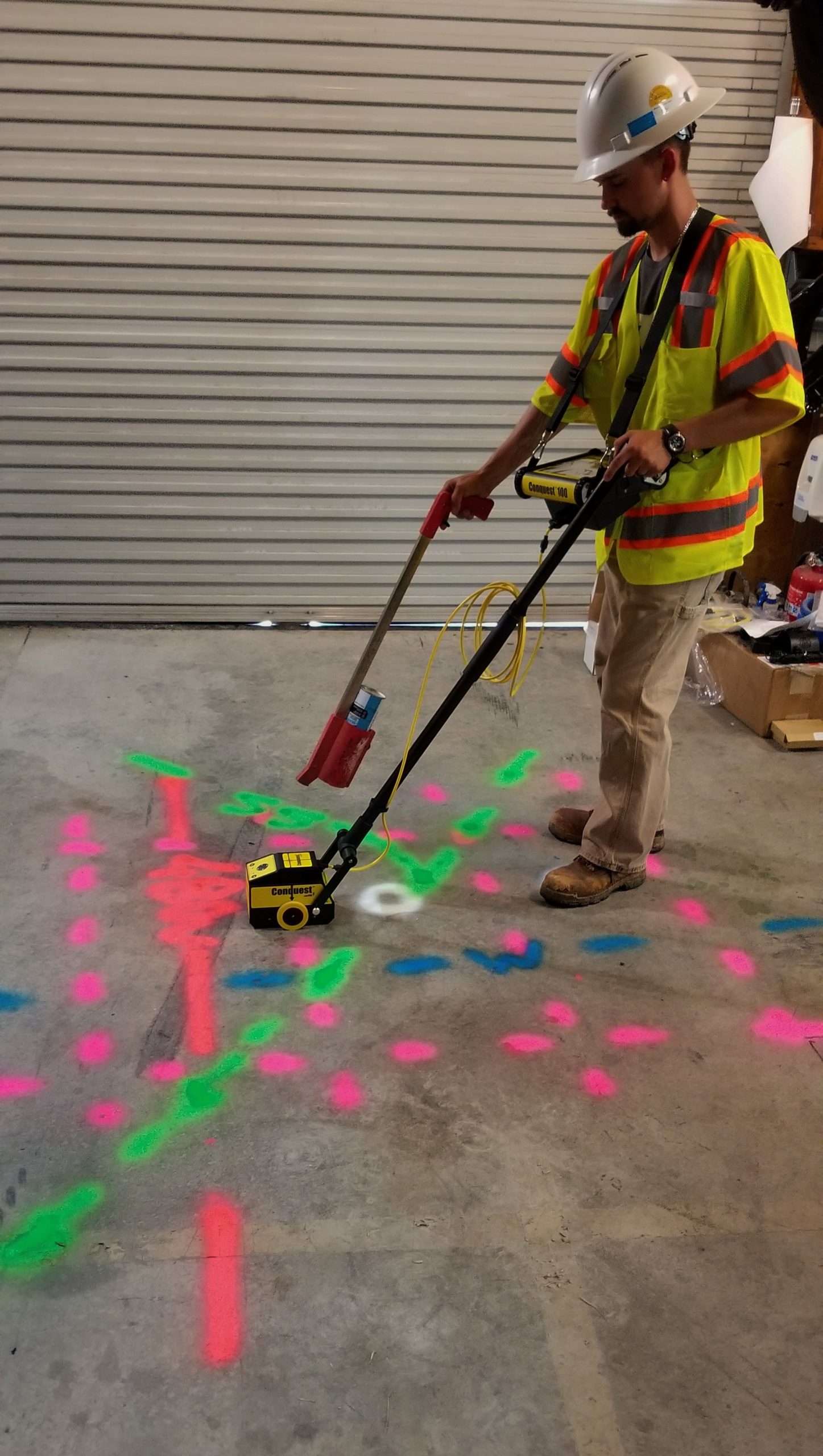RainierGPR Concrete Scanning: Ingenious Solutions for Complicated Jobs
RainierGPR Concrete Scanning: Ingenious Solutions for Complicated Jobs
Blog Article
The Value of Accurate Concrete Scanning in Finding Underground Hazards
The ability to precisely spot and map these underground threats is not merely an issue of convenience but a vital element of guaranteeing the safety and security of both building and construction workers and the stability of the job itself. By releasing innovative scanning modern technologies and methods, specialists can discover hidden dangers, protect against pricey problems, and inevitably pave the method for smoother and much safer building and construction ventures.
Advanced Scanning Technologies for Detection
Cutting-edge radar systems are transforming the area of underground detection by offering unrivaled precision and effectiveness. These innovative scanning modern technologies make use of ground-penetrating radar (GPR) to create comprehensive pictures of subsurface frameworks, supplying insights into what lies below the surface area with impressive clarity. By releasing high-frequency pulses into the ground and gauging the representations, radar systems can recognize variants in product structure and spot underground risks such as pipelines, cables, and spaces.
Among the vital benefits of these advanced radar systems is their non-invasive nature, permitting extensive assessments without causing damage to the existing structures. This not just ensures the security of the surrounding atmosphere yet likewise minimizes the need for costly repair services or disruptions to continuous construction jobs. Additionally, the real-time data offered by these scanning innovations allows quick decision-making and boosts overall task performance.
Importance of Subsurface Mapping

Exact subsurface mapping aids in avoiding costly damages to existing underground infrastructure, lowering the danger of accidents, and preserving project timelines. It makes it possible for project managers to make educated decisions pertaining to website planning, equipment deployment, and source allotment. Additionally, subsurface mapping enables better coordination among different groups functioning on a project and helps in adhering to regulatory demands associated with underground utility discovery.
Mitigating Dangers in Building Jobs
Efficient risk mitigation strategies are important for ensuring the success and security of construction projects. Determining and addressing possible risks prior to they intensify is critical in keeping job timelines, budgets, and overall high quality. One essential aspect of mitigating risks in building projects is detailed preparation and analysis at the preliminary phases. Conducting extensive website studies, including specific concrete scanning for underground hazards, can aid in determining prospective issues beforehand. Using sophisticated technologies like ground-penetrating radar and electromagnetic induction can aid in discovering utilities, rebar, or other obstructions that might position dangers throughout building.
Furthermore, developing clear interaction channels among all project stakeholders and guaranteeing rigorous adherence to safety methods are important components of danger mitigation. By proactively executing robust risk mitigation techniques, construction jobs can minimize delays, expense overruns, and safety and security incidents, inevitably leading to successful task outcomes.

Preventing Expensive Problems and Hold-ups
To reduce economic losses and task problems, reliable techniques should be carried out to avoid pricey problems and hold-ups in construction tasks. Identifying these obstructions early on assists in intending the project format more efficiently and preventing possible problems during excavation.
Additionally, purchasing training programs for construction workers on the importance of concrete scanning and secure excavation practices can dramatically decrease the threat of delays and accidents. Clear communication networks in between task managers, designers, and on-site employees are additionally necessary to ensure that everyone understands the prospective hazards and follows the needed methods to stop expensive damages. By prioritizing proactive steps like concrete scanning and advertising a culture of safety and recognition, construction tasks can minimize the economic influence of unforeseen underground obstructions and avoid pricey delays.
Ensuring Security of On-Site Personnel
By prioritizing proactive steps such as detailed training programs and clear communication channels, building tasks can make sure the safety and security of on-site employees in the middle of the potential threats detected with concrete scanning. Appropriate training gears up workers with the expertise and abilities required to navigate construction sites securely, specifically link when hazards are recognized via scanning procedures. Training needs to cover hazard acknowledgment, emergency procedures, and the appropriate application of personal safety tools to reduce threats efficiently.
Additionally, developing clear interaction networks is important for disseminating information regarding recognized risks quickly. This ensures that all on-site employees know possible risks and can take essential safety measures to stay clear of accidents. Routine security rundowns, toolbox talks, and regular updates concerning scanning results help keep every person educated and aggressive in keeping a safe workplace.
Moreover, carrying out stringent adherence to security methods and policies, conducting normal safety and security audits, and promoting a culture of safety consciousness amongst workers are you could try this out vital parts in making sure the well-being of on-site personnel during construction tasks - RainierGPR Concrete Scanning. Positive precaution not just safeguard workers from harm yet likewise add to the total success and efficiency of the project
Verdict
Utilizing advanced scanning technologies and subsurface mapping assists alleviate dangers in building and construction tasks, stopping expensive problems and delays. It is vital for building business to prioritize the usage of exact scanning methods to lessen potential hazards and make sure a smooth building and construction procedure.

By proactively applying durable danger reduction approaches, building tasks can minimize delays, cost overruns, and safety and security incidents, inevitably leading to effective job results. - RainierGPR Concrete Scanning
To reduce financial losses and project setbacks, reliable approaches need to be applied to protect against pricey damages and delays in construction tasks. By focusing on positive measures like concrete scanning and promoting a culture of safety and security and recognition, building click resources projects can decrease the financial influence of unexpected below ground blockages and prevent costly hold-ups.
By focusing on proactive procedures such as comprehensive training programs and clear interaction channels, construction tasks can make sure the safety of on-site personnel in the middle of the potential threats detected via concrete scanning. Utilizing innovative scanning innovations and subsurface mapping aids mitigate dangers in construction tasks, avoiding pricey damages and delays.
Report this page